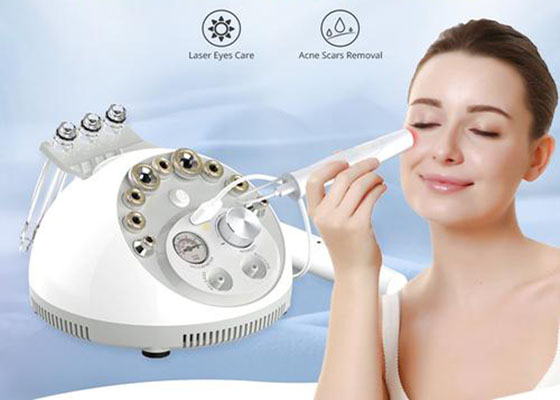Skincare enthusiasts are always on the lookout for the best combination of ingredients to achieve a radiant and youthful complexion. Among the popular ingredients in the skincare world, retinol, niacinamide, and hyaluronic acid have garnered significant attention for their remarkable benefits. But can these ingredients be used together? In this article, we will explore the compatibility of retinol, niacinamide, and hyaluronic acid and discuss how you can incorporate them into your skincare routine for optimal results.
The Benefits of Retinol
Retinol, a derivative of vitamin A, is renowned for its anti-aging properties and ability to promote skin renewal. When applied topically, retinol penetrates the skin and stimulates collagen production, reducing the appearance of fine lines, wrinkles, and uneven skin tone. Additionally, retinol helps to unclog pores, making it effective in combating acne and improving overall skin texture.
The Benefits of Niacinamide
Niacinamide, also known as vitamin B3, offers a plethora of benefits for the skin. It has been shown to strengthen the skin barrier, thereby improving moisture retention and reducing water loss. Niacinamide also helps regulate sebum production, making it an excellent choice for individuals with oily or acne-prone skin. Furthermore, it has anti-inflammatory properties, which can calm redness and soothe irritated skin.
The Benefits of Hyaluronic Acid
Hyaluronic acid is a hydrating powerhouse. It is a natural substance found in the skin that has the remarkable ability to retain moisture. By attracting and binding water molecules, hyaluronic acid keeps the skin plump, supple, and well-hydrated. This ingredient is particularly beneficial for individuals with dry or dehydrated skin, as it helps restore and maintain optimal moisture levels.
Can You Use Retinol with Niacinamide?
There has been some confusion and debate regarding the combination of retinol and niacinamide in skincare routines. However, the good news is that these two ingredients can be used together without any major issues. Both retinol and niacinamide offer unique benefits to the skin and do not directly counteract each other’s effects.
Some concerns have arisen from early studies suggesting that high concentrations of niacinamide could potentially reduce the conversion of retinol to its active form, retinoic acid. However, these studies used unrealistic concentrations that are not typically found in skincare products. In practical terms, the chances of experiencing any significant negative interactions between retinol and niacinamide are minimal.
In fact, using retinol and niacinamide together can be a winning combination. Retinol helps improve skin texture and diminish fine lines, while niacinamide works on reducing inflammation and enhancing the skin barrier. Incorporating both ingredients into your skincare routine can provide comprehensive skincare benefits.
Can You Use Retinol with Hyaluronic Acid?
The combination of retinol and hyaluronic acid is generally safe and can be highly beneficial for your skin. Retinol helps stimulate collagen production and exfoliate the skin, while hyaluronic acid replenishes moisture and maintains hydration levels. These two ingredients work synergistically to promote a healthy complexion.
It’s worth noting that some individuals may experience mild dryness or irritation when using retinol, especially during the initial stages of incorporating it into their routine. In such cases, hyaluronic acid can be an excellent ally, as it helps counteract the potential dryness by providing intense hydration. By using hyaluronic acid concurrently with retinol, you can mitigate any dryness or discomfort and maintain a well-hydrated complexion.
Can You Use Niacinamide with Hyaluronic Acid?
Niacinamide and hyaluronic acid are both versatile skincare ingredients that complement each other well. Niacinamide’s ability to regulate sebum production and strengthen the skin barrier pairs perfectly with hyaluronic acid’s hydrating properties. Together, they can promote a balanced and moisturized complexion.
Niacinamide helps regulate oil production, making it beneficial for individuals with oily or combination skin. By controlling sebum levels, niacinamide can reduce the likelihood of clogged pores and breakouts. Hyaluronic acid, on the other hand, replenishes moisture and keeps the skin hydrated, regardless of your skin type. Using these two ingredients together can help achieve a harmonious balance between oil control and hydration.
How to Incorporate Retinol, Niacinamide, and Hyaluronic Acid into Your Skincare Routine
Now that we’ve established that retinol, niacinamide, and hyaluronic acid can be used together, let’s discuss how you can incorporate them into your skincare routine effectively:
- Start slowly: If you’re new to using retinol, begin by using it every other night to allow your skin to adjust. Gradually increase the frequency as your skin becomes more tolerant.
- Apply retinol at night: Retinol can make your skin more sensitive to sunlight, so it’s best to use it in the evening. Follow it with a moisturizer to help soothe and hydrate the skin.
- Use niacinamide in the morning: Niacinamide works well in the morning routine to regulate sebum production and provide antioxidant benefits. Apply it after cleansing and before moisturizing or applying sunscreen.
- Apply hyaluronic acid on damp skin: Hyaluronic acid works best when applied to damp skin. After cleansing, gently pat your face with a towel, leaving it slightly damp, and then apply hyaluronic acid to lock in moisture.
- Layer in the correct order: When using all three ingredients, the general rule of thumb is to apply them in the following order: cleanse, tone (if using), niacinamide, hyaluronic acid, and finally, retinol. Finish with a moisturizer to seal in all the beneficial ingredients.
Conclusion
you can safely use retinol, niacinamide, and hyaluronic acid together in your skincare routine. These ingredients offer a range of benefits and can complement each other, providing comprehensive skincare results. Remember to introduce retinol slowly, use niacinamide to regulate sebum production, and incorporate hyaluronic acid for hydration. With careful integration and consistent use, you can enjoy the advantages of these powerful ingredients and achieve healthy, radiant skin. Embrace the versatility of retinol, niacinamide, and hyaluronic acid, and tailor your skincare routine to meet your specific needs for a glowing complexion.




